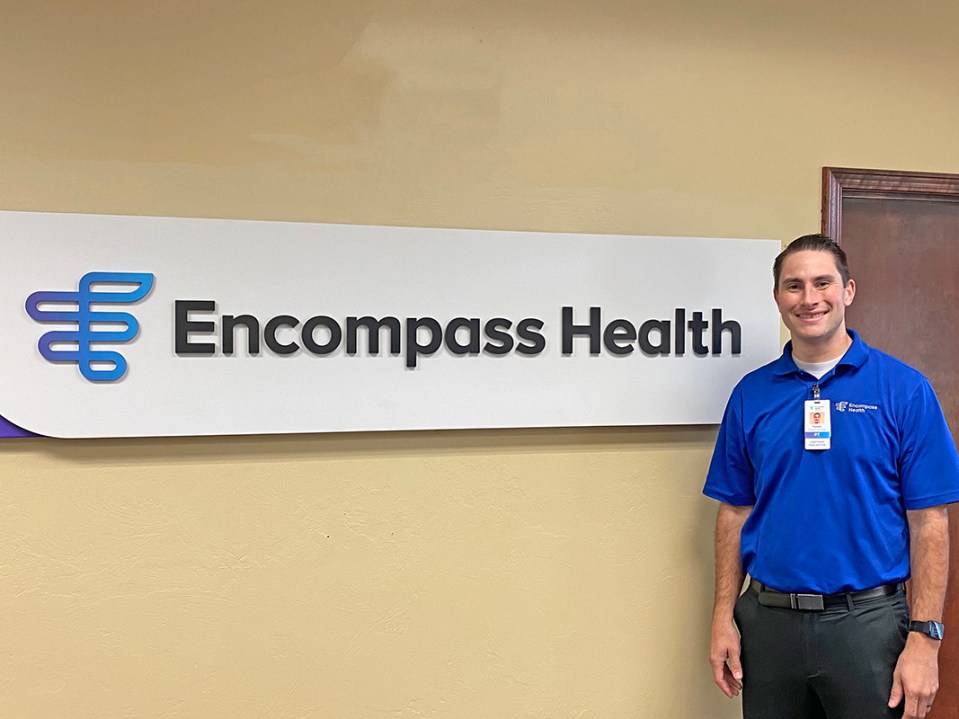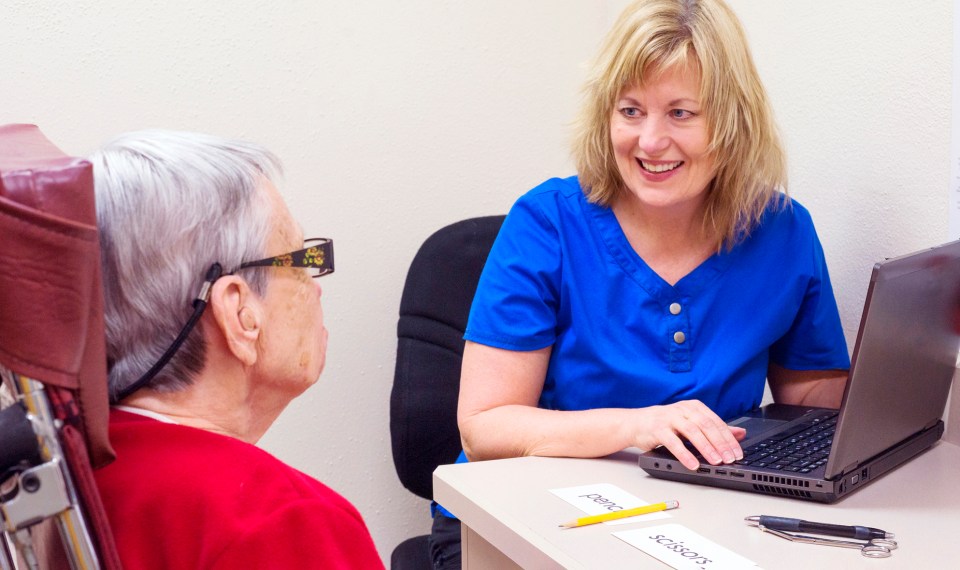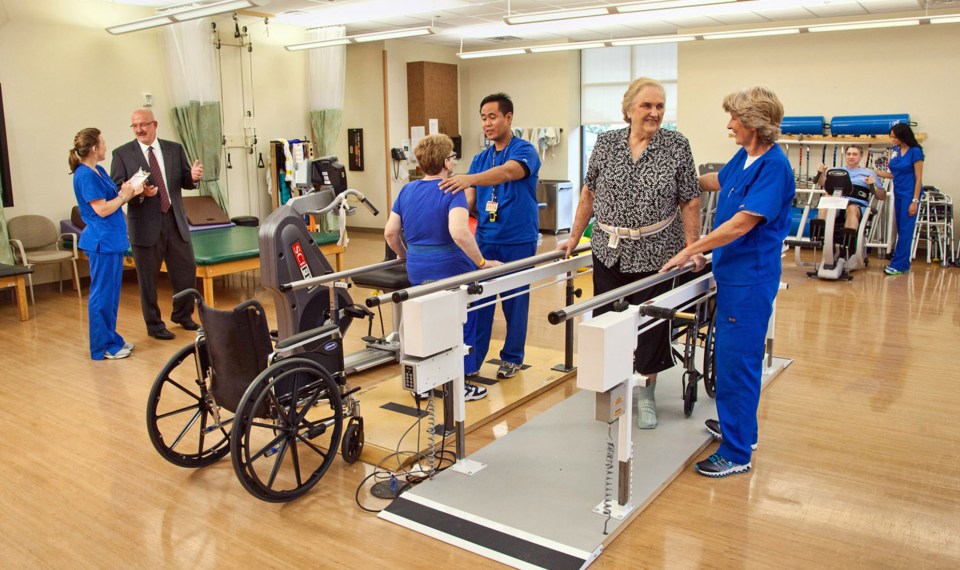by Trevor Baker, PT, DPT, GCS
It took a long journey for Dorothy in the Wizard of Oz to genuinely feel and experience the magic that came in the words, “There is no place like home.” Home symbolizes happiness, high quality of life and a sense of belonging. These are all things that we wish for as we experience life’s wonders and challenges.
Prior to my tenure as a physical therapist and as I searched to find the career that would best match my personality, strengths and goals, my father figure took me under his wing to teach me a little about his career as a home health physical therapist. I remember having that “ah-ha” moment years ago when sitting in an individual’s home, watching my mentor care for someone’s aging mother, that this indeed was the path I wanted to pursue.
There was something special about seeing someone heal and recover in their own home. I could see a different comfort level as she worked to regain her strength – one where she had greater confidence and motivation. I could see how she was surrounded by family members that really cared and were invested in her getting stronger and maintaining her ability to continue living in her home. I saw how influential my father figure was in this process and how over the course of a few weeks, he empowered the patient to reach her goal of being able to safely walk throughout her home.
Home health physical therapy strives to help patients recover and improve function, safety, strength and capacity to do what they wish so they can live safely in their home while having the greatest quality of life possible. We comprehensively evaluate all factors of an individual and then create a plan of care to reach the patient’s specific goals. We are also trained to identify barriers in the home that could be safety concerns.
Physical therapists are musculoskeletal experts, with many trained at a doctorate level today. We help patients navigate the aches and pains of life associated with the movement of our bodies. Unlike medical doctors, we don’t prescribe medications as the remedy, but instead prescribe exercise or other manual interventions that will result in a patient moving at their best with less pain.
On a daily basis, I utilize the most recent research, data and evidence to create home exercise programs with an emphasis on building strength, endurance and improving balance. It’s not uncommon for me to train a patient on utilizing a walker, cane or even a wheelchair so that they can get around their home and their community safely and live their life to the fullest.
Helping patients achieve their goals
But first and foremost, physical therapists strive to help the patient and family members achieve the specific goals they want to accomplish.
When training to become a physical therapist at The University of Utah, I remember how our professors ingrained in us the importance of identifying what truly mattered to the patient and their families. This culture has remained with me and when first evaluating a patient, one of the primary focuses is to find out what really matters to them.
For some, the goal is to maintain their balance well enough that they aren’t falling when walking to and from the bathroom. For another, the goal is for them to safely use the stairs in front of their home so they can make it to and from doctor’s appointments. For one patient I recently worked with, his goal was to be able to tend to his yard and his wife’s flowers in the backyard without losing his balance and hurting as much. All of these examples demonstrate the role of physical therapy in improving the quality of life in the home and beyond.
I’ve found that the majority of patients I’ve worked with in the home are those who are having more birthdays and experiencing some of the negative effects of aging. I’m a firm believer that just because there are some negative effects associated with aging, it doesn’t mean we have to suffer. I believe that if we do the right things, which often includes different aspects of physical therapy, we can indeed navigate some of these hurdles and have an outstanding quality of life.
I recently had the privilege of working with a patient who returned to her own home from an assisted living facility to live under the care of her granddaughter. The caregiver was having some bad pain in her back from transferring the patient in and out of bed, on and off the toilet, shower chair, recliner and wheelchair. She shared with me how her grandmother has Alzheimer’s disease and had become weaker over the years, and her granddaughter was concerned that she may not be able to care for her in the home. As we utilized some creative strategies, the patient showed great improvement with her strength, and was even able to walk from her living room to the dining room whereas she was unable to walk at all prior to home health physical therapy. Just as exciting, the caregiver shared with me how her back was no longer hurting when she assisted her grandmother because she had learned the proper techniques from our therapy session and the patient had learned to do more on her own as opposed to the caregiver fully lifting the patient. This is the kind of success I get to experience on a daily basis as a home health physical therapist.
Just like Dorothy in the Wizard of Oz came to the realization that there is indeed no place like home, I’m a firm believer and advocate that the home is one of the most effective places for a patient to recover and pursue physical therapy with the right therapist and provider. Aging occurs at all paces and in many different ways, but by having the right people provide care at the right time, patients can have a high quality of life filled with wonderful and memorable experiences.
The content of this site is for informational purposes only and should not be taken as professional medical advice. Always seek the advice of your physician or other qualified healthcare provider with any questions you may have regarding any medical conditions or treatments.



